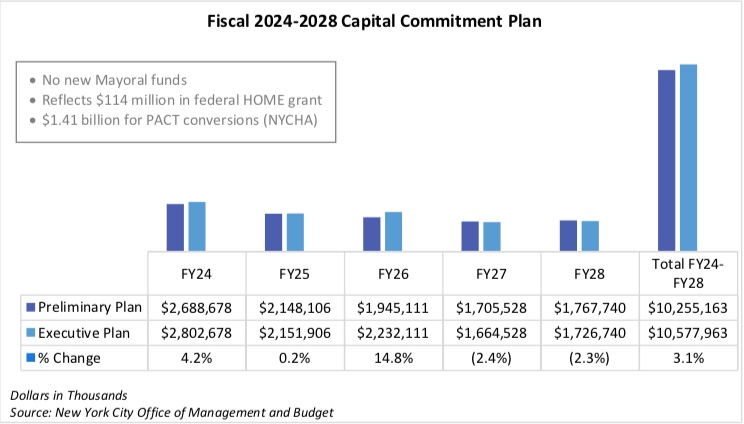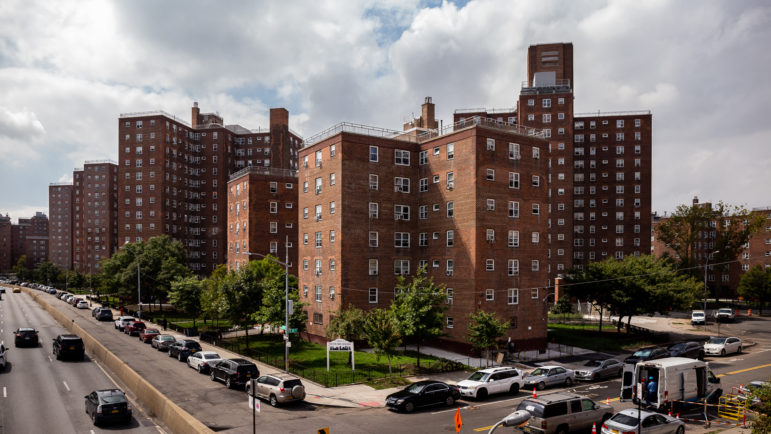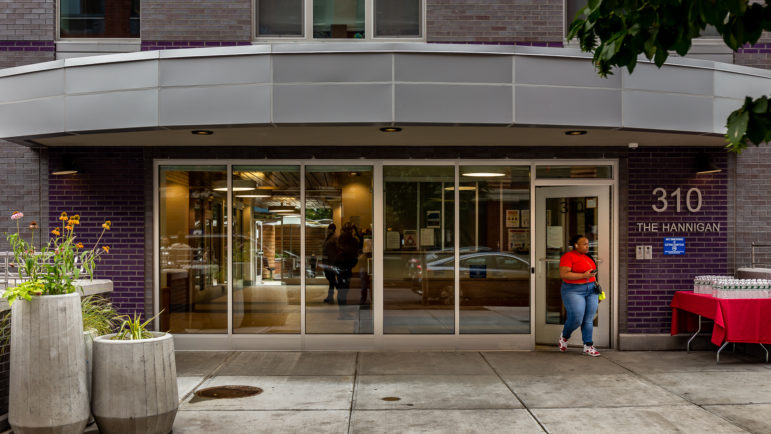The City Council is pushing for an additional $3.66 billion for affordable housing over the next five years, building on the $10.5 billion the mayor earmarked in his executive budget in April.

Ayman Siam/Office of NYC Comptroller
The Council’s Progressive Caucus, along with the city comptroller and public advocate, announced the “Homes Now, Homes for Generations” campaign in March to push for more housing funding.The City Council isn’t giving up on its demand for additional housing funds in the city’s next budget—a boost its members say would preserve or build an extra 60,000 affordable homes in the city over the next half decade.
In their response to Mayor Eric Adams’ preliminary budget released in January, councilmembers had sought an additional $3.66 billion in capital funds over the next five years for the Department of Housing, Preservation and Development (HPD), which lawmakers say would fulfill Adams’ campaign promise of providing $2.5 billion annually for housing development.
But the mayor’s executive budget, unveiled in April, failed to include that $732 million-per-year bump. Adams and the Council have until July 1 to pass a final spending plan.
“With the mayor’s moonshot pledge for 500,000 new homes built over the next decade, we were disappointed to see the administration did not add any new money for affordable housing capital,” said Councilmember Justin Brannan to a panel of HPD officials, including Commissioner Adolfo Carrión Jr., at an executive budget hearing last week.
HPD’s five-year capital plan, for fiscal years 2024 to 2028, totals $10.5 billion in the mayor’s executive budget proposal, a more than 3 percent increase from the preliminary budget plan he released in January. But that bump, the Council noted in its HPD budget report, wasn’t from new mayoral investments but from applied federal grant funds.
“[We] can’t recognize the city’s in a housing crisis and not invest our resources accordingly to resolve [it], neither can we expect our economy to grow,” said Brannan. “New Yorkers that make that economy don’t have the stability and affordable home to come back to when the day is done.”
Carrión told lawmakers that HPD is “committed to continuing the rate of production,” noting that the agency’s work to finance affordable construction and preservation represents “only a thin slice of a very large housing market.”
He pointed to the recent state budget deal, which included tax breaks for buildings with income-restricted apartments as well as the mayor’s City of Yes for Housing Opportunity proposal, which aims to ease zoning restrictions to make it easier to build residential, and is currently under public review.
“I think we’re going to unleash a tremendous amount of housing in New York City’s future, and it’s around the corner,” Carrión said.
Mayor Adams’ executive proposal for fiscal year 2025 alone, which starts July 1, includes $2.15 billion for HPD’s capital budget, a 23 percent decrease from the current fiscal year 2024.

NYC Council
HPD’s proposed capital budget.Adding fuel to the Council’s fire, a recent report by the New York Housing Conference (NYHC), citing that decline, projects a 32 percent decrease in the number of affordable housing units financed with capital subsidy next year.
That could translate to less than half the amount of new construction and special needs housing—like supportive and senior apartments—compared to previous years, the report says. The city completed more than 21,000 affordable units during the last two fiscal years, up from 15,232 in fiscal year 2021, according to the Mayor’s Management Report.
The report further notes that despite the modest increase in proposed funding for preservation finance programs, it fails to match escalating construction expenses that have risen by 26 percent since 2020. The report calls for the city to allocate an additional $1 billion for HPD for the upcoming fiscal year, on top of the mayor’s proposed $2.1 billion.
“Simply put, $2.1 billion is not enough to maintain historic housing production levels,” Brendan Cheney, director of policy and operations at NYHC, told City Limits.

New York Housing Conference
A chart from a New York Housing Conference recent analysis which projected a drop in housing production based on the current budget proposal.The additional housing funds the Council seeks would include $2.5 billion over the next five years for HPD’s neglected Neighborhood Pillars and Open Door programs.
Members of the Council’s Progressive Caucus are rallying for that investment, having formed the “Homes Now, Homes for Generations” Coalition in March to press for the two affordable housing initiatives.
Created under the de Blasio Administration, Neighborhood Pillars helped nonprofits and community organizations buy and renovate unregulated or rent-stabilized housing for low- to moderate-income households by providing low-interest loans and tax exemptions. However, this program’s budget was slashed to zero in 2020, so only 400 apartments were ever preserved under it.
The Open Door program helps fund the construction of coops and condos for moderate- and middle-income households, though lack of funding has led to fewer than 500 homes being built under the initiative in the last decade, according to the Coalition.
“We really just have a tale of a New York City that is moving toward not being a place of opportunity, not being a place for low-income New Yorkers,” Councilmember Pierina Sanchez, who chairs the Committee on Housing and Buildings, said during an interview with City Limits after the coalition formed in March.
Their effort came in the wake of the New York City Housing and Vacancy Survey (HVS) released in February, which revealed an alarming 1.4 percent vacancy rate in 2023—the lowest on record in over half a century. Worse still, what little housing was available was generally unaffordable to the average New Yorker.
For instance, according to HPD, the median asking rent for available units in 2023 was $3,000, meaning that a family would need to have an income of at least $120,000 to afford it, while the median income of New York City renters is only $70,000.
With the extra funds they’re asking for, the Caucus says, the city could create an additional 3,100 new homes for families under the Open Door program and rehabilitate and preserve 9,000 rent-stabilized units through the Neighborhood Pillars program.
“We believe and want to see the promise of this program of Neighborhood Pillars realized,” said Sanchez. “We had some success, but we never funded it fully.”
At last week’s hearing, Carrión said that Neighborhood Pillars remains a “priority” for the department but that they needed to do some “re-engineering” of the program. He later confirmed they hoped to relaunch Neighborhood Pillars before year’s end.
“We definitely know there is demand from nonprofit…housing developers and those who end up stewarding and holding property that needs to be below market,” said Brooklyn Councilmember Sandy Nurse, one of the Caucus’ members pushing to see the program revived. “They are asking for this.”
For Councilmember Sanchez, it all comes back to the mayor’s pledge when he ran for office.
“We are a far cry from that,” she said at a rally following the Council hearing. “If we are able to approach that number that the mayor has promised as a candidate, we would be able to have the resources to produce affordable housing and subsidized affordable housing at the levels that the city needs.”
To reach the reporter behind this story, contact Chris@citylimits.org. To reach the editor, contact Jeanmarie@citylimits.org
Want to republish this story? Find City Limits’ reprint policy here.








